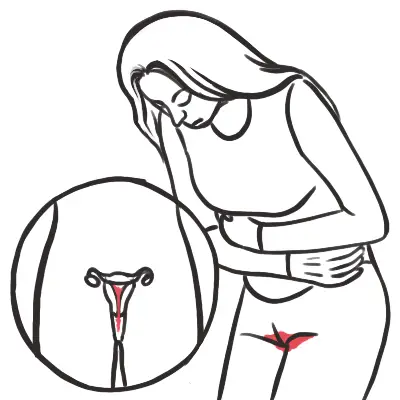
Overview Abnormal uterine bleeding (AUB) is a common gynecologic complaint, accounting for one-third of outpatient visits to gynecologists. AUB can be caused by a wide variety of local and systemic diseases or related to medications. The most common etiologies in nonpregnant women are structural uterine pathology, anovulation, disorders of hemostasis, or neoplasia. This section will mainly focus on adults who are not pregnant. AUB includes amenorrhoea, menorrhagia, polymenorrhoea, oligomenorhea, intermenstrual bleeding, etc.
| Definition AUB: refers to menstrual bleeding of abnormal quantity, duration, or schedule Menorrhagia: Abnormal heavy bleeding at menstruation Dysmenorrhea: Painful menstruation Amenorrhea: refers to absence of bleeding for at least three usual cycle lengths. |
Normal Anatomy and Physiology of the menstrual Cycle
The characteristics of normal menstrual bleeding are
Differential Diagnosis - PALM-COIEN
Structural Causes - PALM
Systemic and Iatrogenic - COIEN
| Think The most common cause of AUB in pubertal adolescents is anovulation due to an immature hypothalamic pituitary axis. Other common causes include pregnancy, infection, the use of hormonal contraceptives, stress (psychogenic or exercise induced), bleeding disorders, and endocrine disorders (eg, hypothyroidism, polycystic ovary syndrome) |
| Remember Dysfunctional uterine bleeding is defined as AUB without an identifiable pathologic condition |
History and Examination
| Remember Consider local gynaecological and non-gynaecological causes of bleeding |
Investigations
| Side note Saline infusion sonography (also called sonohysterography) is a technique in which sterile saline is instilled into the endometrial cavity and a transvaginal ultrasound examination is performed. This procedure allows for an architectural evaluation of the uterine cavity to detect lesions (eg, polyps or small submucous fibroids) that may be missed or poorly defined by transvaginal sonography alone |
After pregnancy has been excluded, endometrial sampling should be performed in women with AUB at an increased risk of endometrial hyperplasia or cancer.
| Increased risk of endometrial cancer |
| Post-menopausal women |
| Age >45 to menopause |
| Endometrial hyperplasia |
| Tamoxifen use |
| Unopposed endogenous/exogenous oestrogen |
| Family history of endometrial cancer |
| Family history of ovarian and breast cancer |
| Lynch syndrome |
| Radiotherapy |
